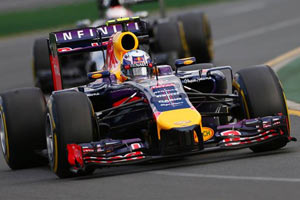When I use the word stall, I always put it within quotation marks because F1 wings rarely truly stall; they just lose efficiency. So, for me, that's what "stall" means. It's an old habit I picked up when talking about
intentional reductions in efficiency with a macro term most folks can easily understand. Perhaps it's time for me to drop that habit.
If it's led to any confusion here, I apologize.
My idea is that the slots reduce the efficiency of the wing tips in order to reduce the strength of the resultant vortices and thus reduce the drag penalty such vortices impose.
They're basically an effort to achieve this...

...without reducing wing area.
With regard to the effect of yaw on the efficiency of the front wing, I absolutely agree it has a
dramatic impact. In fact, I tend to think front wings create peak downforce
only in yaw, because that's generally when downforce is needed most. So, it only makes sense for front wing development to follow along those lines.
I think that's clearly demonstrated in current-generation wings whose most-downforce-producing elements are clustered toward the outside, where uninhibited flow (read: no downstream blockages) can only be achieved when the wheel behind it is turned. (The narrower wings this season have reduced the effectiveness of this philosophy.)
 RB9
RB9
This isn't really possible for rear wings, though, for two reasons. First: the front wing passes through naked air. That is, it passes through air that has not been conditioned in any way by any aerodynamic devices on the car. That means it can take advantage of any change in direction it imparts on that flow. After all, it is precisely that change of direction that results in the ability of the outside edge of the wing to produce more downforce.
In fact, it's only by changing the direction of air flow that any wing can create any downforce at any time, yanno?
Because rear wings never really encounter naked air flow, at least not in abundance, they tend to be optimized to pass through air flow already conditioned by the front wing and other devices to travel straight back.
And second: rear wing designs created to enhance performance in yaw, like whatever the hell that thing was on the back of the RA108, are banned. So are the devices formerly used to condition air flow over it, e.g "Viking horns."
 Honda RA108
Honda RA108
And really, those devices didn't "enhance" downforce as much as they attempted to mitigate downforce losses in yaw, because, again, rear wings create peak downforce in straight air flow. All other conditions result in lost efficiency.
And think twice about why McLaren might be willing to suffer a slight increase in drag with aerodynamically-shaped suspension members. If that results in increased efficiency from the diffuser, it's a pretty big net gain, because ground-effect downforce is the
single-most efficient form of downforce. The more downforce you get from a diffuser, the less you need to get it from wings. That's a pretty big deal in a fuel-limited formula when drag squares with speed, and the power needed to overcome that drag is cubed at the same time.
Sorry if I'm droning on and on and on... Brevity is a virtue I do not possess. (And it appears I've developed a compulsion to illustrate. Great, just what I needed.)

















